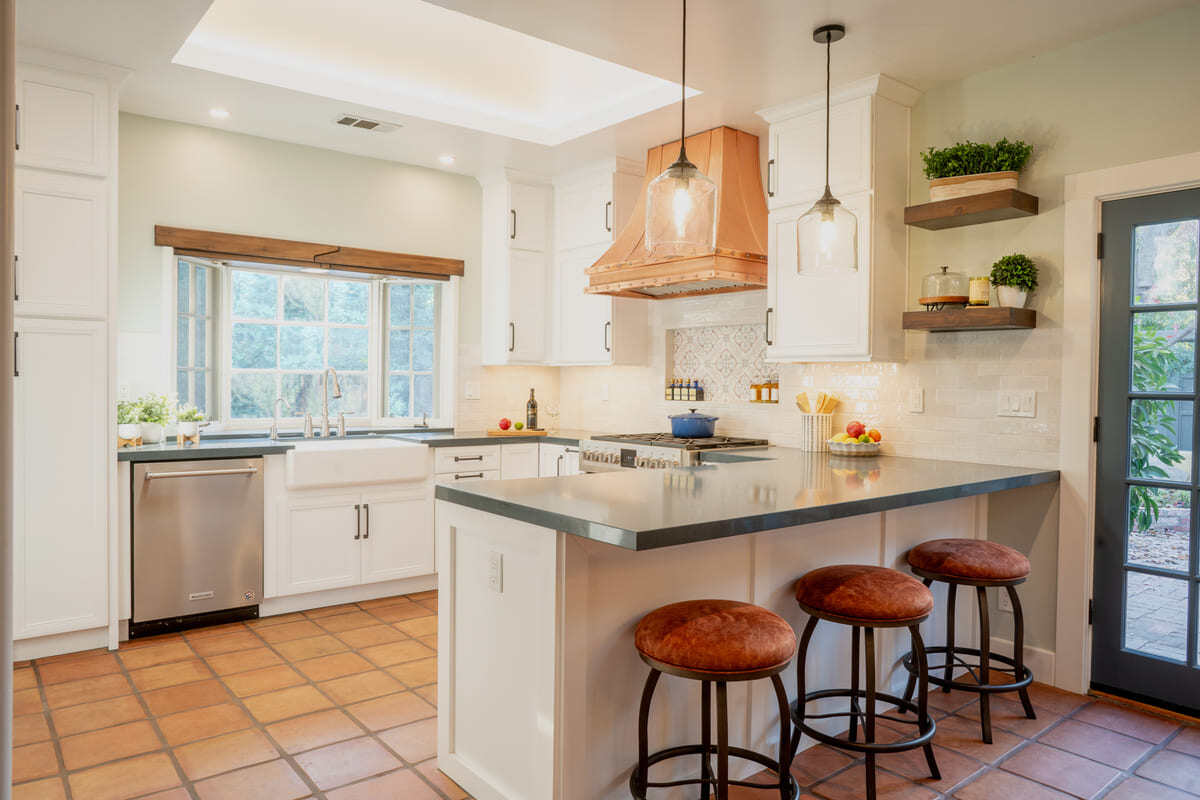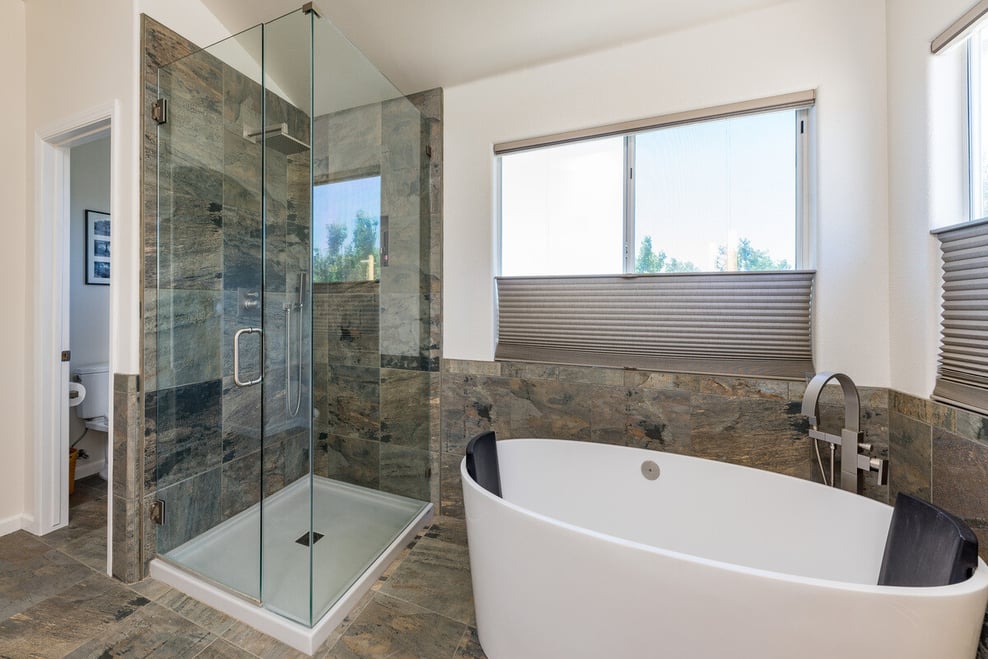

If you're thinking about remodeling your home, you're probably feeling excited... and maybe a little intimidated. Between hiring the right team, managing a budget, and trying to avoid construction horror stories you’ve heard from neighbors, it’s easy to get overwhelmed before the work even begins. One of the biggest decisions you’ll make early on is how to structure your project. Should you go the traditional route: hire a designer or architect, get a few contractor bids, and piece the puzzle together yourself? Or is it smarter to find a team that handles both the design and the construction in one seamless process?
At Imagine Remodeling, we’ve walked side-by-side with Fresno homeowners through both methods, and we’ve seen firsthand what works and what creates headaches. That’s why we’re breaking down everything you need to know about design-build vs. traditional bid. No fluff. Just the facts, with some friendly perspective from folks who live and breathe construction and design every day. Let's dig in together.
What Is Design-Build Construction?
Let’s start with the basics. Design-build is a project delivery method where one team handles your remodel's design and construction. That means you work with a single company from start to finish instead of hiring an architect separately and then shopping around for contractors (hoping they can bring that design to life without issues).
The Design-Build Process
Understanding the differences between design-build and traditional construction starts with understanding the design-build process.
-
Initial Consultation – You meet with the design-build team to talk goals, budget, and vision.
-
Design Phase – The in-house design team creates a plan that aligns with your style and budget.
-
Construction Agreement – You approve a fixed scope of work and timeline before any demo starts.
-
Build Phase – The same company that designed the project manages the construction, keeping everything aligned, on time, and on budget.
What Makes Design-Build Different?
If you’re working with a residential design-build contractor (like us), this method is tailored specifically for homeowners, not corporate clients or commercial developers.
-
Teamwork from day one – Designers and builders collaborate early, meaning fewer surprises and smoother execution.
-
More accurate pricing upfront – Because the people pricing the work actually build it.
-
Real-time communication – You get updates from one team that knows the full scope, not a game of telephone between companies.
What Is Traditional Construction (Design-Bid-Build)?
Traditional construction, often called design-bid-build, is the method most people are familiar with, even if they don’t know it by name. It’s the standard way projects have been run for decades. In this setup, you hire a designer or architect first. Once the design is finished, you send it to a handful of contractors who bid on the project. Then you select one to do the construction work.
On paper, it sounds straightforward. In reality, it often becomes more complicated than homeowners expect.
Typical Design-Bid-Build Process
Here’s the typical flow:
-
You meet with a designer or architect and go through several revisions.
-
You take those plans and get bids from general contractors.
-
You pick a contractor (often the lowest bidder) and hope they can build exactly what’s been designed.
-
If the budget runs over or the design needs to change, it’s back to the drawing board, sometimes literally.
The problem isn’t that this method is broken. It’s that it can be disjointed. The designer and contractor usually aren’t part of the same team, so communication gaps happen. If something in the design doesn’t translate well to construction, or if the contractor identifies an issue mid-build, changes can ripple through your schedule and your budget. And guess who gets stuck in the middle of those conversations? You.

Design-Build vs. Traditional Bid: Pros and Cons
To make things easier, here’s a quick comparison of how these two approaches stack up on the things homeowners care most about.
Curious about the current local cost of the remodeling project you've got in mind? Our detailed cost information is here for you!

FAQs About Design-Build Construction
When homeowners start comparing design-build and traditional construction, a few common questions always pop up. Let’s walk through them together.
Is a design-build firm worth it?
For most homeowners, absolutely. Working with a design-build firm streamlines your project, gives you a single point of accountability, and cuts down on the common headaches that come with managing multiple professionals. You’re not chasing down updates from three different companies or trying to referee disagreements. Instead, you have one team guiding you every step of the way. It’s a better fit for homeowners who want a smoother, more efficient process without sacrificing quality.
Is design-build more expensive?
Not necessarily, and in many cases, it actually saves money. While a design-build quote might look higher upfront compared to a lowball contractor bid, it often includes all of the realistic costs from the start. In traditional bid models, hidden costs tend to show up later through change orders, unexpected delays, and miscommunications between design and construction. Design-build firms prioritize transparency, giving you a more honest picture of what your project will cost before you commit.
Why do homeowners prefer design-build contracts?
Because it reduces risk, saves time, and makes the remodeling process less stressful. Homeowners like knowing they have a single team that’s responsible for both the vision and the execution. They appreciate the clear communication, the more predictable timelines, and the fact that someone else is managing the logistics, especially when long-term planning is involved, such as updating your home for aging in place.
Does design-build mean fewer design options?
Not at all. A good design-build firm will offer the same (or better) creative options as a traditional architect. In fact, because the design team works directly with the construction team, they can push creative ideas and keep them practical for your budget and timeline. You get the best of both worlds: design innovation without losing sight of buildability.
How early should I involve a design-build firm in my project?
The sooner, the better. Bringing a design-build firm in early means they can help you shape the project realistically from the start, setting expectations on cost, timeline, and design possibilities before you get too far down the road. Early involvement prevents costly redesigns and wasted time later.
When Does Traditional Bid Make Sense?
While we’re big believers in the design-build model for most residential projects, we’ll be the first to say: there are times when a traditional bid approach makes sense. If you already have a fully completed, permit-ready set of construction drawings from an architect, and you're confident that the plans won't change, then traditional bid might be a reasonable path. This is especially true for commercial projects, government-funded builds, or specialty construction that requires strict separation between designer and builder for legal or regulatory reasons.
Traditional bid can also be a fit if you have extensive experience managing construction projects yourself and want to maintain hands-on control over choosing each individual professional, coordinating schedules, and negotiating costs at every stage. That said, for most homeowners, especially those tackling a renovation while balancing busy lives, traditional bid simply adds layers of complexity, cost uncertainty, and risk that design-build is specifically designed to eliminate. The difference is especially clear on projects that involve a big style shift, like turning a simple Ranch into a Spanish Revival home, where design and construction need to work hand in hand.
Imagine the Possibilities for Your Home in Fresno, California
Imagine Remodeling specializes in guiding homeowners through every step of the residential design-build process with transparency, clear communication, and a focus on making the experience as rewarding as the result. If you're ready to take the first step toward a smoother remodel, we're here to help.
Contact us today to schedule your consultation and see how our Fresno area design-build team can help you start the remodel that will change your life.




